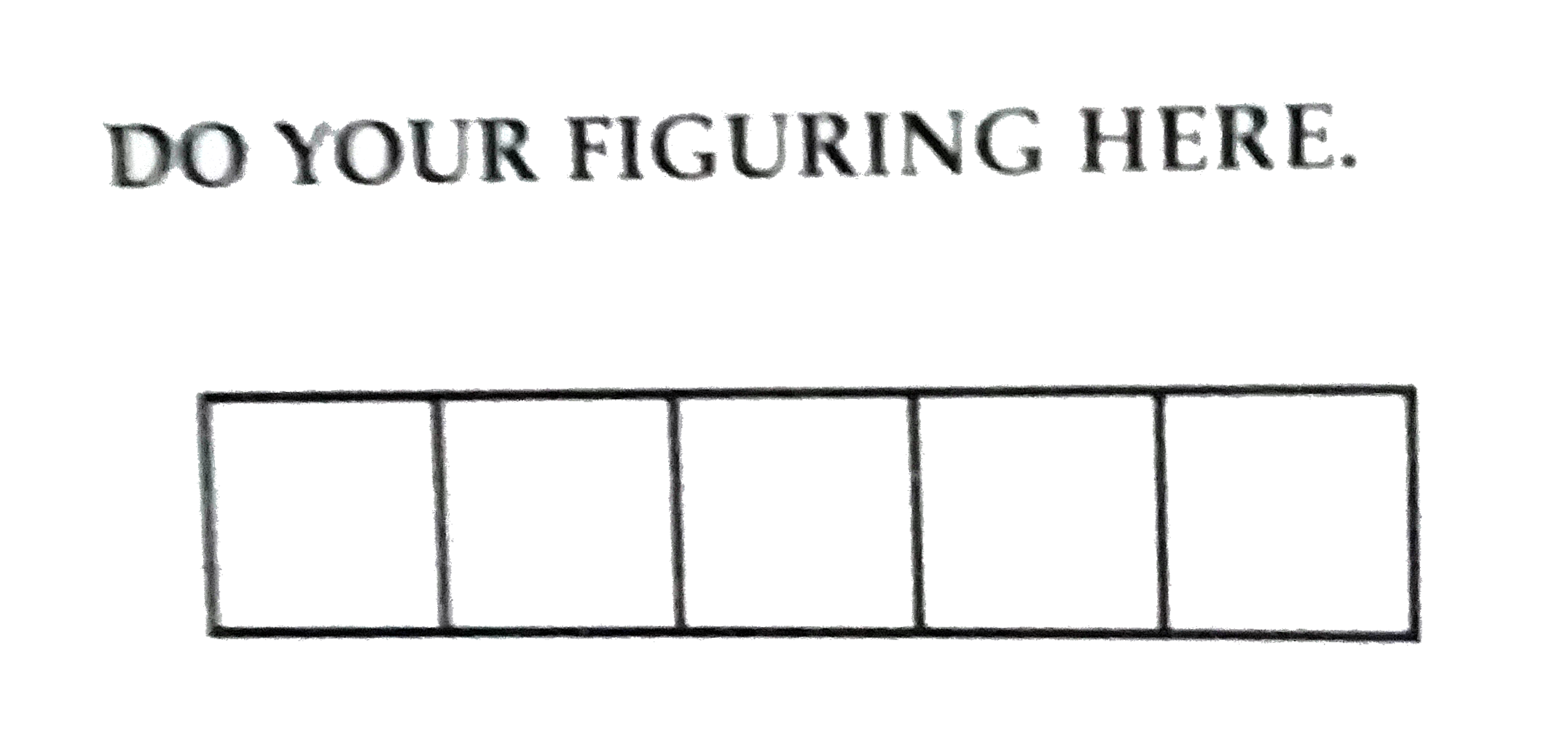P and Q are two points on the curve y=2x+2 in the rectangular cartesian coordinate system such that ¯¯¯¯¯¯OP.¯¯¯C=−1and¯¯¯¯¯¯OQ.¯¯¯C=2. where ¯c is the unit vector along the positive direction of the x-axis. Then ¯¯¯¯¯¯OQ−4¯¯¯¯¯¯OP= (A) 3i+8j (B) 4i+6j (C) 2(3i+4j) (D) (4i+3j)
The correct Answer is:(10)
To solve the problem step by step, we will first identify the points P and Q on the curve y=2(x+2) and then find the required expression ¯OQ−4¯OP.
Step 1: Understand the curve equation
The equation of the curve is given as:
y=2(x+2)
We can rewrite this as:
y=4⋅2x
Step 2: Define the unit vector ¯C
The unit vector ¯C along the positive direction of the x-axis is:
¯C=^i
Step 3: Use the dot product conditions
We are given two conditions:
1. ¯OP⋅¯C=−1
2. ¯OQ⋅¯C=2
Since ¯C=^i, we can express ¯OP and ¯OQ in terms of their components:
- Let ¯OP=xP^i+yP^j
- Let ¯OQ=xQ^i+yQ^j
Step 4: Find coordinates of point P
From the first condition:
¯OP⋅¯C=xP=−1
Now substituting xP=−1 into the curve equation to find yP:
yP=2(−1+2)=21=2
Thus, the coordinates of point P are:
¯OP=−1^i+2^j
Step 5: Find coordinates of point Q
From the second condition:
¯OQ⋅¯C=xQ=2
Now substituting xQ=2 into the curve equation to find yQ:
yQ=2(2+2)=24=16
Thus, the coordinates of point Q are:
¯OQ=2^i+16^j
Step 6: Calculate ¯OQ−4¯OP
Now we need to compute:
¯OQ−4¯OP=(2^i+16^j)−4(−1^i+2^j)
Calculating 4¯OP:
4¯OP=4(−1^i+2^j)=−4^i+8^j
Now substituting this into our expression:
¯OQ−4¯OP=(2^i+16^j)−(−4^i+8^j)=2^i+16^j+4^i−8^j
Combining like terms:
=(2+4)^i+(16−8)^j=6^i+8^j
Final Result
Thus, the final result is:
¯OQ−4¯OP=6^i+8^j
The equation of the curve is given as:
y=2(x+2)
We can rewrite this as:
y=4⋅2x
The unit vector ¯C along the positive direction of the x-axis is:
¯C=^i
We are given two conditions:
1. ¯OP⋅¯C=−1
2. ¯OQ⋅¯C=2
- Let ¯OP=xP^i+yP^j
- Let ¯OQ=xQ^i+yQ^j
From the first condition:
¯OP⋅¯C=xP=−1
Now substituting xP=−1 into the curve equation to find yP:
yP=2(−1+2)=21=2
Thus, the coordinates of point P are:
¯OP=−1^i+2^j
From the second condition:
¯OQ⋅¯C=xQ=2
Now substituting xQ=2 into the curve equation to find yQ:
yQ=2(2+2)=24=16
Thus, the coordinates of point Q are:
¯OQ=2^i+16^j
Now we need to compute:
¯OQ−4¯OP=(2^i+16^j)−4(−1^i+2^j)
Calculating 4¯OP:
4¯OP=4(−1^i+2^j)=−4^i+8^j
Now substituting this into our expression:
¯OQ−4¯OP=(2^i+16^j)−(−4^i+8^j)=2^i+16^j+4^i−8^j
Combining like terms:
=(2+4)^i+(16−8)^j=6^i+8^j
Thus, the final result is:
¯OQ−4¯OP=6^i+8^j
Topper's Solved these Questions
- PRODUCT OF VECTORSBOOK - ARIHANT MATHS ENGLISHCHAPTER - PRODUCT OF VECTORSEXERCISE - Exercise (Questions Asked In Previous 13 Years Exam)
51 Videos
- PRODUCT OF VECTORSBOOK - ARIHANT MATHS ENGLISHCHAPTER - PRODUCT OF VECTORSEXERCISE - Exercise (Single Integer Answer Type Questions)
15 Videos
- PROBABILITYBOOK - ARIHANT MATHS ENGLISHCHAPTER - PROBABILITYEXERCISE - Exercise (Questions Asked In Previous 13 Years Exam)
54 Videos
- PROPERTIES AND SOLUTION OF TRIANGLES BOOK - ARIHANT MATHS ENGLISHCHAPTER - PROPERTIES AND SOLUTION OF TRIANGLES EXERCISE - Exercise (Questions Asked In Previous 13 Years Exam)
21 Videos
Similar Questions
The unit vector along →A=2ˆi+3ˆj is :
View SolutionThe unit vector along →A=2ˆi+3ˆj is :
View Solutionif P,Q are two points on the line 3x+4y+15=0 such that OP=OQ=9 then the area of triangle OPQ is
View SolutionThe unit vector parallel to the resultant of the vectors A = 4i+3j + 6k and B = -i + 3j-8k is
View SolutionFind the unit vector in the direction of the sum of the vectors 2ˆi+3ˆj−ˆk and 4ˆi−3ˆj+2ˆk.
View SolutionPoint P is the endpoint of vector OP and point Q is the endpoint of vector OQ. When the vectors ¯¯¯¯¯¯OP and ¯¯¯¯¯¯OQ are added, what is the length of the resultant vector ?

View SolutionTwo points P and Q are lying on the curve y=log2(x+3) in xy plane such that −−→OP .ˆi=1 and ,→OQ⋅ˆj=3 ,then the value of ∣∣∣−−→OQ−2−−→OP∣∣∣ is (where,"O" is the origin).
View SolutionLet P and Q are two points in the xy plane on the curve y=x11−2x7+7x3+11x+6 such that −−→OP⋅ˆi=5,−−→OQ⋅ˆi=−5, then the magnitude of −−→OP+−−→OQ is
View SolutionThe angle which the vector →A=2ˆi+3ˆj makes with the y-axis, where ˆi and ˆj are unit vectors along x- and y-axis, respectively, is
View SolutionLet ¯a,¯b,¯c be unit vectors such that ¯a+¯b+¯c=¯0. Which one of the following is correct?
View Solution
